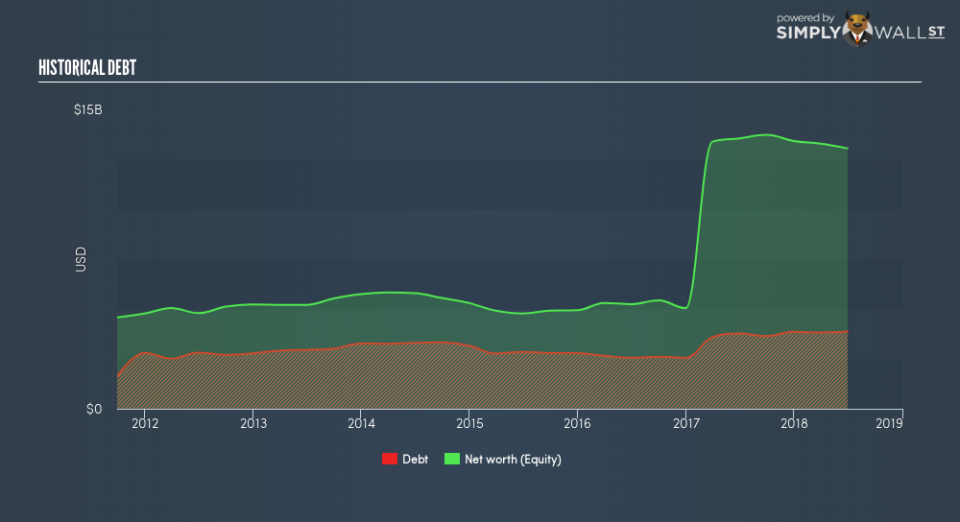With An ROE Of 1.47%, Has TechnipFMC plc’s (NYSE:FTI) Management Done Well?

This analysis is intended to introduce important early concepts to people who are starting to invest and want to start learning about core concepts of fundamental analysis on practical examples from today’s market.
TechnipFMC plc (NYSE:FTI) generated a below-average return on equity of 1.47% in the past 12 months, while its industry returned 7.21%. FTI’s results could indicate a relatively inefficient operation to its peers, and while this may be the case, it is important to understand what ROE is made up of and how it should be interpreted. Knowing these components could change your view on FTI’s performance. I will take you through how metrics such as financial leverage impact ROE which may affect the overall sustainability of FTI’s returns.
See our latest analysis for TechnipFMC
Breaking down ROE — the mother of all ratios
Return on Equity (ROE) weighs TechnipFMC’s profit against the level of its shareholders’ equity. An ROE of 1.47% implies $0.015 returned on every $1 invested. While a higher ROE is preferred in most cases, there are several other factors we should consider before drawing any conclusions.
Return on Equity = Net Profit ÷ Shareholders Equity
Returns are usually compared to costs to measure the efficiency of capital. TechnipFMC’s cost of equity is 10.29%. Since TechnipFMC’s return does not cover its cost, with a difference of -8.82%, this means its current use of equity is not efficient and not sustainable. Very simply, TechnipFMC pays more for its capital than what it generates in return. ROE can be split up into three useful ratios: net profit margin, asset turnover, and financial leverage. This is called the Dupont Formula:
Dupont Formula
ROE = profit margin × asset turnover × financial leverage
ROE = (annual net profit ÷ sales) × (sales ÷ assets) × (assets ÷ shareholders’ equity)
ROE = annual net profit ÷ shareholders’ equity
The first component is profit margin, which measures how much of sales is retained after the company pays for all its expenses. Asset turnover reveals how much revenue can be generated from TechnipFMC’s asset base. The most interesting ratio, and reflective of sustainability of its ROE, is financial leverage. Since ROE can be inflated by excessive debt, we need to examine TechnipFMC’s debt-to-equity level. The debt-to-equity ratio currently stands at a low 29.63%, meaning TechnipFMC still has headroom to borrow debt to increase profits.
Next Steps:
ROE is one of many ratios which meaningfully dissects financial statements, which illustrates the quality of a company. TechnipFMC’s ROE is underwhelming relative to the industry average, and its returns were also not strong enough to cover its own cost of equity. Although, its appropriate level of leverage means investors can be more confident in the sustainability of TechnipFMC’s return with a possible increase should the company decide to increase its debt levels. Although ROE can be a useful metric, it is only a small part of diligent research.
For TechnipFMC, I’ve put together three essential factors you should further research:
Financial Health: Does it have a healthy balance sheet? Take a look at our free balance sheet analysis with six simple checks on key factors like leverage and risk.
Valuation: What is TechnipFMC worth today? Is the stock undervalued, even when its growth outlook is factored into its intrinsic value? The intrinsic value infographic in our free research report helps visualize whether TechnipFMC is currently mispriced by the market.
Other High-Growth Alternatives : Are there other high-growth stocks you could be holding instead of TechnipFMC? Explore our interactive list of stocks with large growth potential to get an idea of what else is out there you may be missing!
To help readers see past the short term volatility of the financial market, we aim to bring you a long-term focused research analysis purely driven by fundamental data. Note that our analysis does not factor in the latest price-sensitive company announcements.
The author is an independent contributor and at the time of publication had no position in the stocks mentioned. For errors that warrant correction please contact the editor at editorial-team@simplywallst.com.


